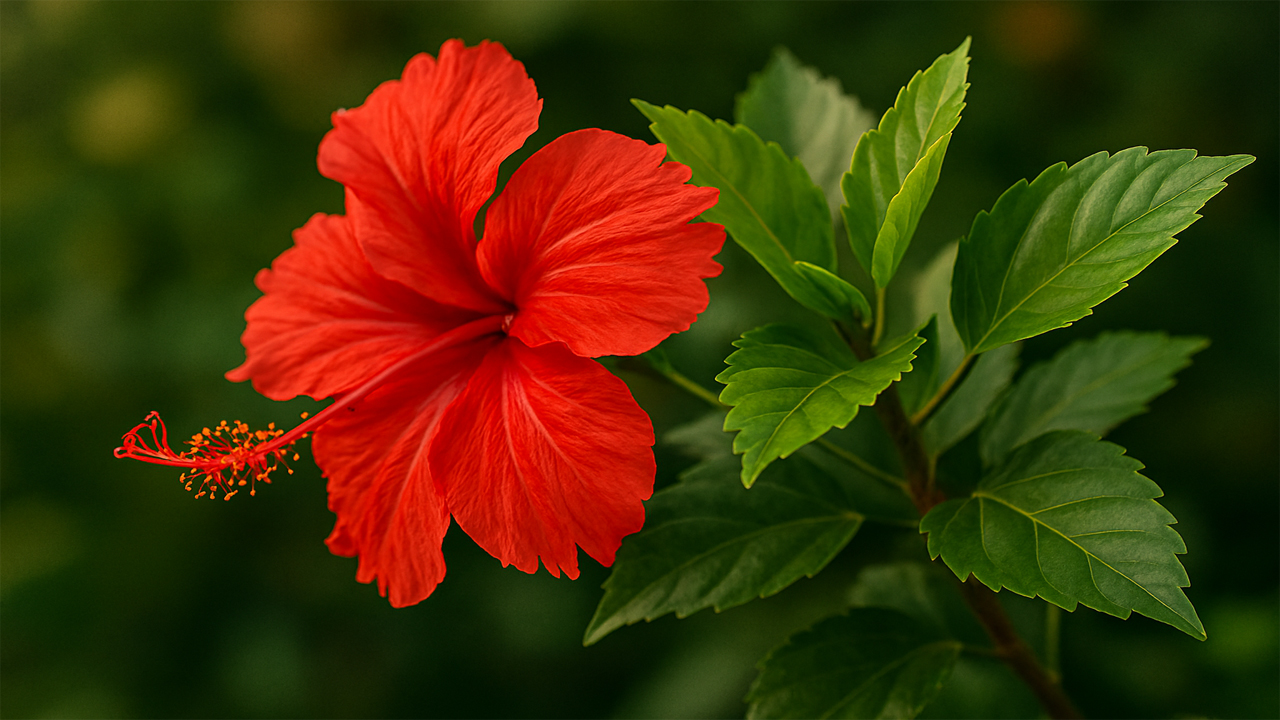Join on WhatsApp
Get the latest updates directly on WhatsApp – motivation, news & more!
This guide offers expert tips on starting your own hibiscus plants for striking tropical blooms. It covers every step from choosing the right variety and finding the ideal location to a complete care routine, including proper watering, fertilizing, and pruning methods.
For gardeners looking to add bold, vivid color to patios or garden landscapes, few plants match the impact of tropical hibiscus. While their exotic appearance can seem challenging, growing hibiscus is within reach for beginners who follow the essential requirements for sunlight, water, and nutrients.
Key Growing Requirements for Hibiscus
Ideal Sunlight: At least 6 to 8 hours of direct sunlight daily
Soil Type: Well-draining, slightly acidic soil with a pH between 6.5 and 6.8
Watering: Keep soil evenly moist but avoid waterlogging; water when the top inch feels dry
Fertilizer: Use a high-potassium, low-phosphorus blend to encourage blooms
Tropical vs Hardy Hibiscus
Before buying a plant, it is important to understand the two main hibiscus categories. Tropical hibiscus (Hibiscus rosa-sinensis) produces the large, showy blooms often seen in Hawaiian settings. These plants are perennial only in USDA Zones 9–11 and need to be brought indoors or treated as annuals in cooler regions.
Hardy hibiscus (Hibiscus moscheutos) can survive freezing conditions. They die back in winter and regrow in spring, producing flowers with a different appearance from tropical varieties. This guide focuses on tropical hibiscus for their distinctive, vibrant blooms.
Step-by-Step Guide to Growing Tropical Hibiscus
Growing tropical hibiscus successfully means recreating the warm, sunny conditions they enjoy in their native climate. This requires careful attention to location, soil, and consistent maintenance.
Choosing a Healthy Plant
Begin by selecting a strong plant from the nursery. Look for glossy, deep green leaves and multiple buds. Avoid plants with yellow leaves or signs of pests, such as fine webbing from spider mites or sticky residue from aphids. Reliable varieties like ‘Brilliant Red’ and ‘Fiesta’ are known for their hardiness and abundant flowers.
Best Location and Sunlight Needs
“Hibiscus are sun-lovers,” says horticulturist Dr. Alistair Finch. “Without at least six hours of bright, direct sunlight, they will produce healthy leaves but very few flowers.” A south-facing spot is ideal, with some protection from strong winds that could damage their delicate blooms.
In very hot climates, light afternoon shade can help protect leaves from scorching. Whether in the ground or a container, location is one of the most important factors for successful flowering.
Soil, Potting, and Planting Tips
Tropical hibiscus performs best in slightly acidic, well-draining soil with a pH between 6.5 and 6.8, as recommended by the American Hibiscus Society. For containers, a quality peat-based potting mix with added perlite or sand will ensure good drainage.
When planting in the ground, enrich heavy clay or sandy soils with compost or aged pine bark to improve moisture retention and aeration. Position the root flare slightly above soil level to prevent rot.
Watering and Feeding for Continuous Blooms
Consistent watering is essential. The goal is moist, not soggy, soil. Water thoroughly when the top inch feels dry. Container plants, especially in clay pots, dry out faster than garden beds and may need daily watering in hot weather.
Fertilizing is equally important. Tropical hibiscus are heavy feeders but cannot tolerate high phosphorus levels, which can block nutrient uptake. Use a high-potassium fertilizer, such as one with an N-P-K ratio of 10-4-12 or 9-3-13, to promote strong flowering.
Pruning for Growth and Flower Production
Pruning encourages new growth, which is where flowers form. Major pruning is best done in early spring, cutting the plant back by about one-third to stimulate new branches.
Throughout summer, pinching back the tips of new shoots after several leaves have developed will encourage even more branching and more flowers.
Overwintering Hibiscus in Cooler Areas
In regions outside the tropics, hibiscus must be brought indoors before the first frost. When nighttime temperatures drop below 50°F (10°C), move container plants to a bright indoor spot, such as near a south-facing window.
During winter dormancy, reduce watering so the soil can dry out more between waterings. The plant may lose many leaves as it adjusts to lower light, which is normal. When spring arrives and frost danger passes, move the hibiscus back outdoors to restart its growing cycle.
Bringing Tropical Color to Your Garden
With the right variety, proper care, and attention to its needs, tropical hibiscus can reward gardeners with months of vibrant, eye-catching flowers. By understanding sunlight, soil, watering, and feeding requirements, even new gardeners can enjoy the dramatic beauty of this tropical showpiece year after year.
